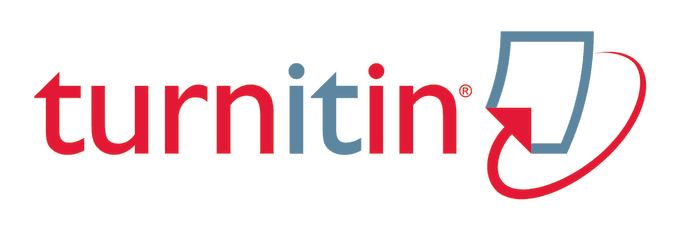Interactivity on Government Social Media to Improve Public Services
DOI:
https://doi.org/10.37535/103004120232Keywords:
Interactivity; Social media; Public service; Government Public Relations; MessageAbstract
Social media is considered to be able to support public service activities by the government by encouraging transparency, creating interaction with citizens, and building collaboration with citizens. The key must be to build an interactive relationship between the government (the organizer of the state authority) and the community. The problem is that our social media has not been used enough for interaction or even only aims to communicate one way. This research is an advanced stage of various previous studies on the use of social media for the Government, especially local governments. There is a tendency to direct the object not on the main government account to become a more specific agency/agency in charge of public services. The researcher wants to see the interactive pattern that occurs on Instagram @dishubsurabaya which is managed by the Surabaya transportation service in order to provide better service. The research was conducted using a case study method by extracting data through interviews with both parties: the government and citizens. The results show that agencies and citizens benefit together when they can connect. To achieve this, the first step is to build a new creative message and then seek interactivity with the availability of a team that is always ready to respond to questions and complaints.
References
Dedi Rianto Rahadi. (2019). MODEL OF SOCIAL MEDIA IN THE PUBLIC SECTOR: A LITERATURE STUDY. Journal of Management and Leadership, 2(2), 58–66.
Dhani Aristyawan. (2021). Strategi Promosi Wisata Heritage melalui Media Sosial, Komunitas dan Event (Studi Kasus pada Dinas dan Kebudayaan Pariwisata Kota Surabaya). The Commercium, 4(2).
Dwi Ajeng Widarini. (2019). PEMANFAATAN MEDIA SOSIAL DALAM SOSIALISASI KESEHATAN REPRODUKSI DAN NUTRISI UNTUK PEREMPUAN. Jurnal Komunikasi Pembangunan, 17(1), 92–101.
Febriannur Rachman, R. (2021). Pemanfaatan Media Sosial Dinas Perhubungan Surabaya dalam Perspektif Kearsipan Digital. Idarotuna : Journal of Administrative Science, 2(1), 1–18. https://doi.org/10.54471/idarotuna.v2i1.2
Ferbita, L. V., Setianti, Y., & Dida, S. (2020). Strategi Digital Branding Lembaga Ilmu Pengetahuan Indonesia (LIPI) Melalui Media Sosial. Journal Acta Diurna, 16(2). https://doi.org/10.20884/1.actadiurna.2020.12.2.2865
Hastrida, A. (2021). Government Social Media Management Process: Benefits And Risks. Journal of Communication and Public Opinion Research, 25(2), 149–165.
Hidayah, N., Sopian, T., Aziz M. Nauval, Feby Nur Ikrawardani, Flavia Domitilla Fausta, Inggit Salsabila Putri, M. Hafidz Annazly, & Salma Nabila M. (2021). Strategi Pemasaran Media Sosial Destinasi Pariwisata Menggunakan Pendekatan SOSTAC. Jurnal Kepariwisataan: Destinasi, Hospitalitas Dan Perjalanan, 5(2), 57–75. https://doi.org/10.34013/jk.v5i2.408
Idris, I. K. (2018). Government Social Media in Indonesia: Just Another Information Dissemination Tool. Jurnal Komunikasi: Malaysian Journal of Communication, 34(4), 337–356. https://doi.org/10.17576/JKMJC-2018-3404-20
Khan, G. F. (2017). Social Media for Government. Springer Singapore. https://doi.org/10.1007/978-981-10-2942-4
Mergel, I., & Bretschneider, S. I. (2013). A Three-Stage Adoption Process for Social Media Use in Government. Public Administration Review, 73(3), 390–400. https://doi.org/10.1111/puar.12021
Muktariza.r, Dr. Rahmawati Dra,. M.Si, Nadia Muharman, M. (2023). PERAN HUMAS DINAS PERHUBUNGAN TERHADAP PEMANFAATAN DAN PENGELOLAAN SOSIAL MEDIA INSTGARAM SEBAGAI MEDIA KOMUNIKASI. Jurnal Ilmiah Mahasiswa FISIP Unsyiah, 8(04). www.jim.unsyiah.ac.id/FISIP
Mustaqbirin, N., Rahmanto, A. N., Sudarmo, N., & Sudarmo, N. (2020). Media Sosial Sebagai Ruang Partisipasi Publik Dalam Pengelolaan Transportasi. Jurnal PIKOM (Penelitian Komunikasi Dan Pembangunan), 21(1), 71. https://doi.org/10.31346/jpikom.v21i1.2929
Pribawana, R., & Kurniadi, O. (2018). Strategi Komunikasi Dinas Perhubungan Kota Bandung dalam Mensosialisasikan Mesin Parkir Elektronik. Prosiding Hubungan Masyarakat, 4(1), 259–263.
Taqiyah, J. N., & Zuhri, S. (2022). PEMANFAATAN MEDIA SOSIAL INSTAGRAM SEBAGAI CITY BRANDING Utilization Of Instagram Social Media As City Branding Transportation Office By Surabaya Department of Transportation. 5(2), 1–18.
Tulung, A. A., Suskarwati, S. ulya, & Abinta, V. C. (2021). INSTAGRAM SEBAGAI MEDIA GOVERNMENT PUBLIC RELATIONS KEMENTERIAN KOMUNIKASI DAN INFORMATIKA DI MASA PANDEMI COVID 19. Commed : Jurnal Komunikasi Dan Media, 5(2), 137–153. https://doi.org/10.33884/commed.v5i2.3667
Widyaranti, T. Y., Sawiji, H., & Ninghardjanti, P. (2020). PENGELOLAAN MEDIA SOSIAL UNTUK MENDUKUNG AKTIVITAS HUMAS PEMERINTAH KOTA SURAKARTA. Jurnal Informasi Dan Komunikasi Administrasi Perkantoran, 4(4), 107–118.
Yulisprianto, A. R., & Aji, G. G. (2018). IMPLEMENTASI GOVERNMENT PUBLIC RELATIONS DIGITAL UNTUK MEMBANGUN KOMUNIKASI DUA ARAH (STUDI KASUS PROGRAM SAPAWARGA PEMERINTAH KOTA SURABAYA). The Commercium, 1(2), 72–75.
Downloads
Published
Issue
Section
License
Copyright (c) 2023 Gilang Aji, Puspitasari Sukardani, Vinda Maya Setianingrum, Galuh Gita Indrajayani

This work is licensed under a Creative Commons Attribution 4.0 International License.
Copyright rules apply for the articles that are featured in COMMENTATE: Journal of Communication Management
- COMMENTATE: Journal of Communication Management holds the right to be the first to publish the article.
- Authors will still be the copyright holder for their articles published on COMMENTATE: Journal of Communication Management and can use it freely as long as it does not violate the rules.
- Papers featured on COMMENTATE: Journal of Communication Management are under the Creative Commons Attribution 4.0 International License. Further details can be access on Open Access Policy.








